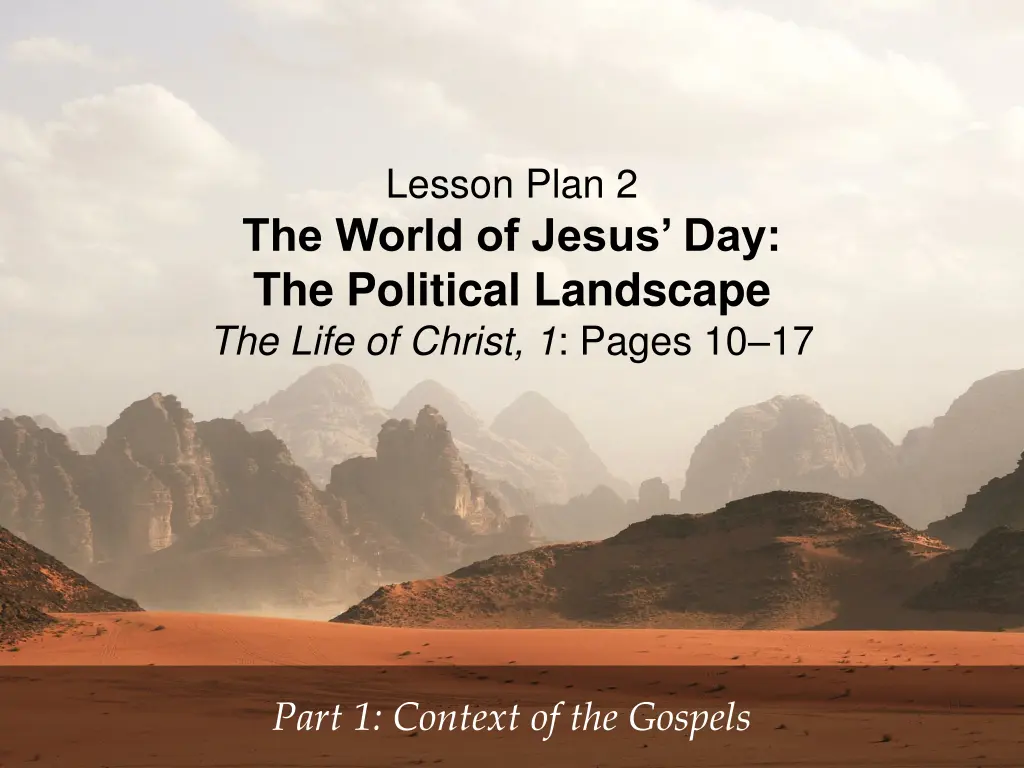
Understanding the Political Landscape of Jesus' Time
Delve into the intricate political setting during the era of Jesus, as depicted in Daniel 2, highlighting the rise of different empires and their significance in the unfolding of events leading up to the birth of Christ.
Download Presentation

Please find below an Image/Link to download the presentation.
The content on the website is provided AS IS for your information and personal use only. It may not be sold, licensed, or shared on other websites without obtaining consent from the author. If you encounter any issues during the download, it is possible that the publisher has removed the file from their server.
You are allowed to download the files provided on this website for personal or commercial use, subject to the condition that they are used lawfully. All files are the property of their respective owners.
The content on the website is provided AS IS for your information and personal use only. It may not be sold, licensed, or shared on other websites without obtaining consent from the author.
E N D
Presentation Transcript
Lesson Plan 2 The World of Jesus Day: The Political Landscape The Life of Christ, 1: Pages 10 17 Part 1: Context of the Gospels
Why was there so much time before the sending of His Son?
F. LaGard Smith suggests three reasons: 1. God may have wanted to dramatize the event. 2. God may have wanted to make the fulfillment of the Messianic prophecy more impressive. 3. God may have simply been waiting until the religious and political situation was exactly right for Jesus.
Galatians 4:4 But when the fullness of the time came, God sent His Son, born of a woman, born under the Law.
Sources of Information for the Intertestamental Period The Apocryphal Writings The Writings of Josephus Miscellaneous Greek and Roman Witnesses Archaeological Findings The Scriptures
The Political Landscape at the Time of Christ
The political framework was outlined in Daniel 2 The great image: You saw, O king, and behold, a great image. This image, mighty and of exceeding brightness, stood before you, and its appearance was frightening. The head of this image was of fine gold, its chest and arms of silver, its middle and thighs of bronze, its legs of iron, its feet partly of iron and partly of clay (Daniel 2:31 33).
The political framework was outlined in Daniel 2 cont d Daniel told Nebuchadnezzar that he (ruler of Babylon) was the head of gold, but went on to say. . . Another kingdom inferior to you shall arise after you, and yet a third kingdom of bronze, which shall rule over all the earth. And there shall be a fourth kingdom, strong as iron, because iron breaks to pieces and shatters all things. And like iron that crushes, it shall break and crush all these (Daniel 2:39, 40).
The political framework was outlined in Daniel 2 cont d From history, we know the four kingdoms were as follows: 1. Babylonian Empire 2. Medo-Persian Empire 3. Grecian Empire 4. Roman Empire
The Political Framework was outlined in Daniel 2 cont d The most important part of the prophecy is found in Daniel 2:44: And in the days of those kings the God of heaven will set up a kingdom that shall never be destroyed, nor shall the kingdom be left to another people (Daniel 2:44).
At the end of the OT, Babylon had fallen, and the Medo-Persian Empire was established. That is what we will talk about next.
The Medo-Persian Empire (539-333 BC) At the end of the OT, Persia controlled Canaan. They still allowed the Jews to be controlled by the High Priest. This period is when Samaritans came along due to tensions between the Jews that were returning and the mixed-race inhabitants (see 2 Kings 17:24 33).
The Grecian Period (333-165 BC) This period is also known as the Macedonian Period because Alexander the Great was from Macedonia. Egypt: The Ptolemies (323-198 BC) Syria: The Seleucids (198-165 BC)
The Period of Independence (165-63 BC) The Jews were motivated to stop the horrible things happening and were led by a priest named Mattathias. It was not long before the Jews lost their independence once again.
The Roman Period (63 BCAD 70) The Jews were conquered by Pompey the Great in 63 BC. Palestine was put under rulers responsible for Rome. Many of these we will read about in the Gospel accounts. The Romans gave the Jews many concessions. The greatest significance to Christians is how the Roman period prepared the way for Christ.
Conclusion These 400 years must have been important years Those of us who live in the aftermath of Jesus earthly ministry are blessed indeed.
